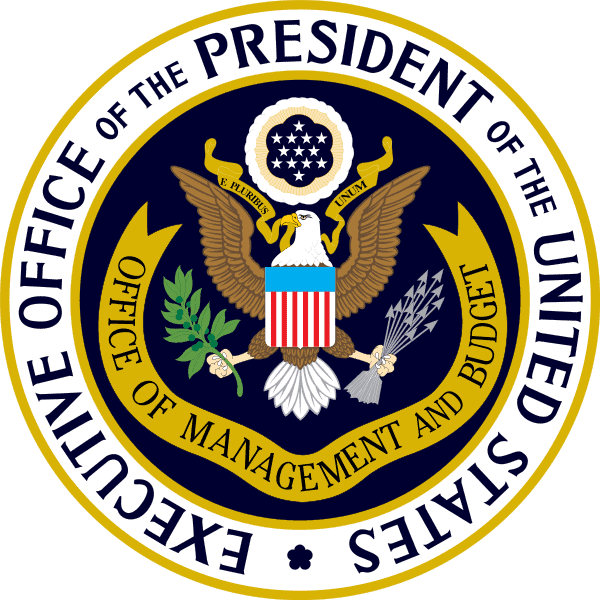Is White House ‘Guidance on Compliance with the Congressional Review Act’ Restraining Agency Rulemaking?

 At a time of trillion-dollar runaway peacetime deficits, big-spenders can take smug comfort knowing that regulation is even less disciplined, especially where ostensibly sub-regulatory guidance documents, notices, bulletins, circulars, interpretations and the like are concerned.
At a time of trillion-dollar runaway peacetime deficits, big-spenders can take smug comfort knowing that regulation is even less disciplined, especially where ostensibly sub-regulatory guidance documents, notices, bulletins, circulars, interpretations and the like are concerned.
On April 11th, there was a brief flurry over an Office of Management and Budget (OMB) memorandum to federal agencies titled “Guidance on Compliance with the Congressional Review Act.” The CRA requires agencies to send rules and guidance to both houses of Congress and to the Government Accountability Office, to provide a means for Congress to disapprove them before they become effective. It was an effort at reaffirming congressional accountability for the regulatory state, of acknowledging Article I of the Constitution. Its passage was hugely bipartisan.
But apart from the recent spasm when the 115th Congress and the Trump Administration eliminated 15 Obama “midnight rules” and one guidance document, the CRA has been fruitlessly beckoning an inert Congress since 1995.
The new OMB memo valiantly but redundantly reinforces these long-ignored legal obligations.
Most notably, the memo appears amid a backdrop wherein almost all guidance documents issued since 1996, as opposed to future ones it addresses, may be invalid, since they were never been reported to Congress and the GAO as the CRA requires. A 2018 House Oversight and Government Reform report called “Shining Light on Regulatory Dark Matter” detailed how 46 agencies have issued at least 13,000 guidance documents over 10 years. But only 189 of them were submitted to Congress and the GAO as required by the CRA, when nearly all should have been.
The new memo reaffirms the “rule” status of guidance documents alongside, and reiterates the requirement that these too must get sent to Congress and the GAO, per the CRA.
As an additional step, the memo outlines a process for all agencies, cooperatively with OMB, to make “major rule determinations.” George Washington University’s Bridget Dooling called this a “gambit” with respect to independent agencies. These bodies have not been treated as subject to cost effectiveness review at the OMB, but on page 4 the memo instructs:
Agencies should not publish a rule—major or not major—in the Federal Register, on their websites, or in any other public manner before [the Office of Information and Regulatory Affairs] has made the major determination and the agency has complied with the requirements ofthe CRA
Have agencies been following the memo since its effective date of May 11th? I don’t think anyone knows yet. One cannot readily find official assessments, and the directive did not provide a coherent means of tracking and reporting anything, especially with respect to guidance.
The administration should redress this and provide updates, perhaps when a year-end update on Trump’s one-end, two-out executive order is provided, or provide clearer information on the Office of Information and Regulatory Affairs’s website, the Unified Agenda of Federal Regulations, or elsewhere. If those Regulatory Reform Task Forces are still in effect somewhere, they should get involved.
There also ought to be Senate hearings on the issue. The House majority apparently couldn’t care less about complying with the CRA, unless the aim is to roll back the rollback of net neutrality.
In a cursory glance at rule and significant rule (roughly $100 million in annual effect; similar to major rules) flows year-to-date, and at May-11-to-date, rules have slowed considerably compared to past years’ similar intervals. But it’s less clear if this is part of the overall regulatory slowdown, or directly attributable to the new instruction, and this is a problem.
2016 2017 2018 2019
Rules (YTD) 2076 1812 1899 1619
Signif (YTD) 206 158 66 39
Rules (May 11 to date) 906 788 757 694
Signif (May 11 to date) 96 47 28 12
For example, in 2018, there were 28 significant rules between May 11th and July 29th; the count is down to 12 for the same interval under the 2019 directive. But note this category has been falling since 2016.
It is unclear if these rules were sent to both Congress and GAO as directed.
On the other hand of these 12 significant rules, none are independent agency rules, which might indicate some effect, implying independent agencies didn’t just plow ahead defiantly.
But on the other hand again, as of July 29th, not one independent agency has anything under review on the Office of Information and Regulatory Affairs’s review site—at least the site is not updated to take into account the new environment created by the memo, since executive agency rules have heretofore been the focus there.
It is possible that there may be ever so microscopically more thorough reporting of “major” rules to GAO. While in the Federal Register, significant rules fell, major rules in the database for the “OMB interval” were 12 in 2019, and included one independent agency rule. These stood at seven in 2017, and 10 in 2018.
The 12 rules in the GAO matches the number finalized in the Federal Register; but guess what—they are not all the same rules.
So has the OMB memo been effective? The conclusion is, we don’t know. The drop in rules is interesting, but more information and checkbook-balancing between the Federal Register, the GAO database, and OMB’s review database is needed. Also, the issue of rules that are deregulatory needs better explanation of how they fit into the mix.
There has been anecdotal discussion of the memo having an effect on the Securities and Exchange Commission, and it has been noted that it may have influence at the Food and Drug Administration. But as James Broughel at the Mercatus Center notes, it does lack teeth.
There is also a big loophole in the form of a “presumptively not major” category, and reporting on that is needed too. Right now, all rules, major and not major, are ostensibly blocked if they do not abide by the Major Rule Determination Process; this exemption will grow if passivity with respect to the CRA continues. But like the inability to assess the effects so far, there’s no place I see yet to track where these “presumptively not major” determinations are being made and disclosed to the public.
Similarly, the OMB needs to update and reissue the rule reporting form that agencies use to report to GAO. This form has its roots in a 20 year old OMB instructional memorandum to agencies, but there is no obvious spot to meaningfully report guidance documents on it, and this is going to plague the new OMB memo’s execution horribly beyond repair.
Arguably, since agencies don’t abide the CRA law already, they’re not going to be swayed by an OMB memo from an acting director giving it a shot in the arm. I have been beating the drum for an executive order on guidance—I think that is necessary. But at the very least there needs immediately to be some new directive on OMB tracking of compliance with its own memo, and we would benefit from a report about it the next time OMB updates the public on Trump’s two-for-one regulatory rollback effort.